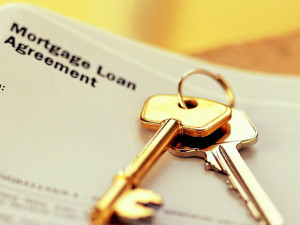Changes in the ways of doing business in Real estate
Sure, some of the things stay the same; in fact they’ll probably continue to remain unchanged for as long as there are transactions between two human beings, be it a seller or buyer or any other dealing in general. Pertaining to the real estate industry, there are many conflicting sides which consider that virtues such as a personal touch and honesty and transparency are done away qualities- its all about the numbers and the profits.
However, things can change as they may, one thing is certain, a home is a precious asset for the seller buyer (and the broker/ agent too) and there are certain tacit guidelines that govern it. It helps to remember that merits such as promptness and redressal of genuine concerns are held in good stead no matter which century we are living in.
Circle this one…and this one too
From potential jobs to prospective bride grooms, the traditional way of looking for something always began with the scouring of the local newspapers. Searching for a prospective home was no different and listing advertisements in the real estate section was usually the first and most important step for anyone who was looking to buy or sell.
Once preferences were duly encircled and the said parties contacted, the buyer would trek down to the location, trusty newspaper in hand. Often times, the effort would be in vain and the search would begin fresh anew. Say, a deal was garnered, there would be a joint discussion and negotiation between the seller and buyer (probably a broker or none at all) and the deal was finalised. Simple.
All this has changed and much to the relief of old timers, technology has made it easy for a buyer to hunt and for a seller to post his property details online. Of course, the property pictures, videos and location details gleaned from Google maps have made the job of house hunting so much easier and quicker. This doesn’t however substitute an actual visit and thorough inspection.
Advertising and promotion
Today, it is not uncommon to get daily updates from real estate agents and builders delivered in the inbox. Agreed, it is annoying when you don’t really need that information, but to a genuine home buyer the daily update means a world of information. Easily sent and received.
In fact, the methodology of reaching out to the buyer/ seller is getting more and more ingenious and innovative day by day. So finding an advertisement of a newly launched property in an unexpected place such as a shopping mall, an airport check in tag or in the parking lot is really not that uncommon anymore.
It definitely beats the conventional way of marketing properties through telephonic cold calls and going door to door, which were considered as effective but intrusive ways of attaining new customers.
Communication with the buyer/ seller
Suppose you had employed the services of a broker, you would typically be barraged by a flurry of calls, personal visits and letters. Some considered it as important communication for establishing a good rapport with the broker, with the end result being a good customer; most others would not have appreciated the constant intrusion in their lives.
Thankfully, this communication now has some semblance of propriety. The agent/ broker will probably communicate with the client via emails or text messages, thereby leaving room for the customer to respond when it is convenient to do so. Besides, there is a clearer message in a written format that would otherwise have been subject to hearsay in a personal meeting.
The flipside to this cutting edge use of communication is that you may perhaps not remember the face of the persons you’re dealing with, as you end up seeing a lot less of each other. The buyer, seller and the broker function as three separate entities that’ve only come together for the sole purpose of closing a transaction. Yet, the efficacy and the benefits of personal freedom that modern technology affords with cannot be ignored and it applies to transacting real estate business just as much as with anything else.






